VW ID.3 vs Hyundai Inster – Różnice i ceny w porównaniu
Koszty i zużycie
Cena i efektywność to kluczowe czynniki przy zakupie auta – właśnie tu często widać największe kontrasty.
Hyundai Inster ma zauważalny przewagę cenową – jego cena zaczyna się od 105000 zł, podczas gdy VW ID.3 kosztuje 146400 zł. Różnica wynosi około 41424 zł.
Pod względem zużycia energii przewagę ma Hyundai Inster: z wynikiem 14.30 kWh na 100 km jest minimalny bardziej wydajny niż VW ID.3, który zużywa 14.50 kWh. Różnica to około 0.20 kWh.
Pod względem zasięgu VW ID.3 wypada oczywisty lepiej: osiąga do 605 km, czyli około 235 km więcej niż Hyundai Inster.
Silnik i osiągi
Moc, moment i przyspieszenie to klasyczne parametry, na których skupiają się entuzjaści – tu widać ciekawe różnice.
Pod względem mocy silnika VW ID.3 ma decydowany przewagę – 326 KM zamiast 115 KM. To różnica około 211 KM KM.
W przyspieszeniu 0–100 km/h VW ID.3 jest wyraźny szybszy – 5.70 s wobec 10.60 s. Różnica wynosi około 4.90 s sekundy.
Pod względem prędkości maksymalnej VW ID.3 jest czytelny lepszy – osiąga 200 km/h, podczas gdy Hyundai Inster kończy na 150 km/h. Różnica to około 50 km/h.
Różnica widoczna jest również w momencie obrotowym: VW ID.3 ciągnie przekonujący mocniej – 545 Nm wobec 147 Nm. Różnica to około 398 Nm.
Przestrzeń i praktyczność
Poza mocą liczy się też wygoda i funkcjonalność. Tu decyduje się, który samochód jest bardziej praktyczny i wszechstronny.
Miejsca siedzące: VW ID.3 oferuje trochę więcej miejsc – 5 vs 4.
Pod względem masy własnej Hyundai Inster jest zauważalny lżejszy – 1380 kg wobec 1787 kg. Różnica to około 407 kg kg.
Pod względem pojemności bagażnika VW ID.3 oferuje oczywisty więcej miejsca – 385 L wobec 280 L. To różnica około 105 L litrów.
W maksymalnej pojemności ładunkowej VW ID.3 wypada w niewielkim stopniu lepiej – do 1267 L, czyli o około 208 L więcej niż Hyundai Inster.
Pod względem ładowności VW ID.3 wypada oczywisty lepiej – 473 kg wobec 357 kg. Różnica to około 116 kg kg.
Kto wygrywa pojedynek?
VW ID.3 okazał się nie daje rywalowi większych szans i tym samym zdobywa tytuł DriveDuel Champion!
W tym porównaniu VW ID.3 to bardziej wszechstronny wybór.
 @ Volkswagen AG / VW Media
@ Volkswagen AG / VW Media
VW ID.3
Koszty i Zużycie
Zobacz analizę szczegółową
Silnik i Wydajność
Zobacz analizę szczegółową
Wymiary i Nadwozie
Zobacz analizę szczegółową
VW ID.3
VW ID.3 to elektryczny hatchback, który robi wrażenie świeżym designem i praktycznym wnętrzem, idealny dla osób szukających codziennego komfortu bez komplikacji. Jazda nim jest cicha i przewidywalna, a manewrowanie w mieście przyjemne — to auto, które łatwo polubić i jeszcze łatwiej polecić.
szczegóły @ Volkswagen AG / VW Media
@ Volkswagen AG / VW Media
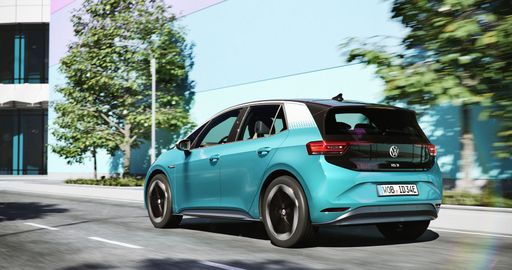 @ Volkswagen AG / VW Media
@ Volkswagen AG / VW Media
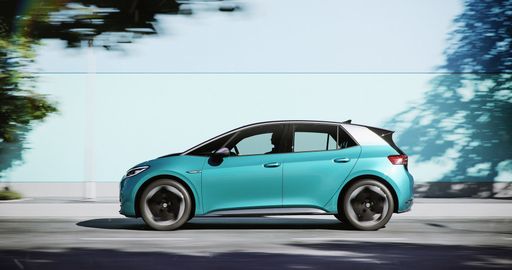 @ Volkswagen AG / VW Media
@ Volkswagen AG / VW Media
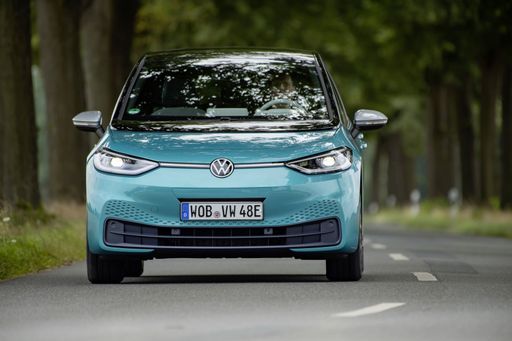 @ Volkswagen AG / VW Media
@ Volkswagen AG / VW Media
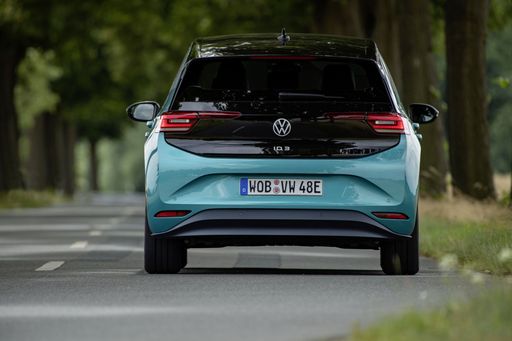 @ Volkswagen AG / VW Media
@ Volkswagen AG / VW Media
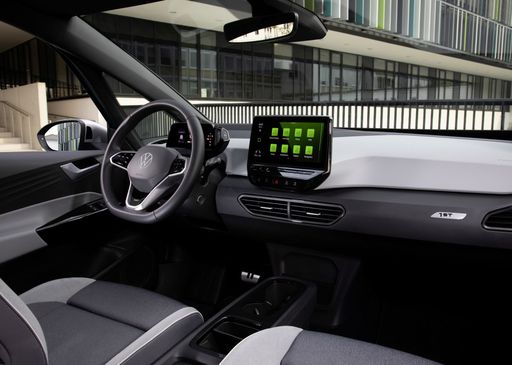 @ Volkswagen AG / VW Media
@ Volkswagen AG / VW Media
 @ Volkswagen AG / VW Media
@ Volkswagen AG / VW Media
Hyundai Inster
Hyundai Inster to samochód, który zaskakuje świeżym stylem i praktycznym podejściem do codziennej mobilności. Dobrze zestrojone zawieszenie i przestronne wnętrze sprawiają, że to pewny wybór dla tych, którzy chcą komfortu bez przepłacania.
szczegóły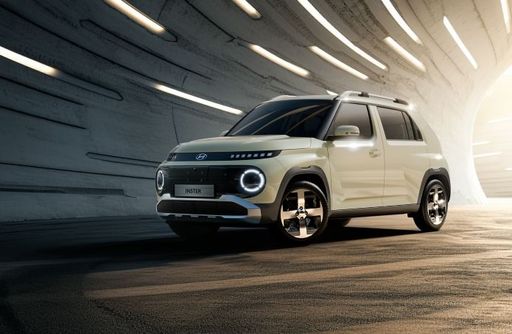 @ Hyundai Motor Company
@ Hyundai Motor Company
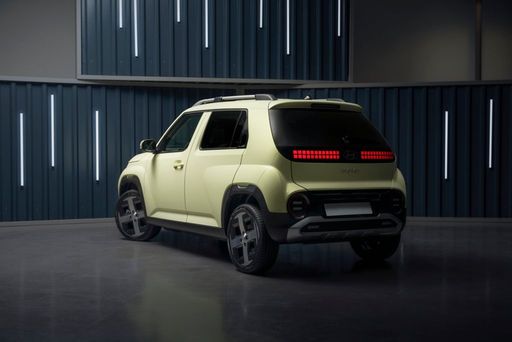 @ Hyundai Motor Company
@ Hyundai Motor Company
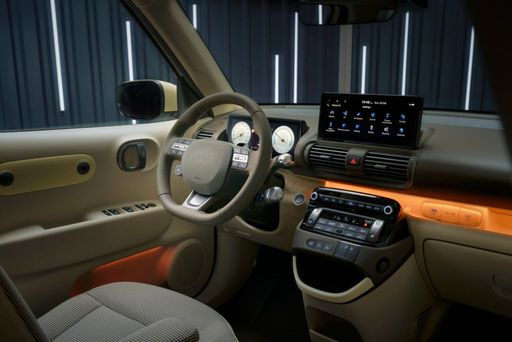 @ Hyundai Motor Company
@ Hyundai Motor Company
 @ Volkswagen AG / VW Media
@ Volkswagen AG / VW Media
|
 @ Hyundai Motor Company
@ Hyundai Motor Company
|
|
|
|
Koszty i Zużycie |
|
|---|---|
|
Cena
146400 - 252700 zł
|
Cena
105000 - 132200 zł
|
|
Zużycie L/100km
-
|
Zużycie L/100km
-
|
|
Zużycie kWh/100km
14.5 - 15.8 kWh
|
Zużycie kWh/100km
14.3 - 15.1 kWh
|
|
Zasięg elektryczny
383 - 605 km
|
Zasięg elektryczny
327 - 370 km
|
|
Pojemność baterii
52 - 79 kWh
|
Pojemność baterii
42 - 49 kWh
|
|
CO2
0 g/km
|
CO2
0 g/km
|
|
Pojemność zbiornika paliwa
-
|
Pojemność zbiornika paliwa
-
|
Wymiary i Nadwozie |
|
|---|---|
|
Typ nadwozia
Hatchback
|
Typ nadwozia
SUV
|
|
Miejsca siedzące
5
|
Miejsca siedzące
4
|
|
Drzwi
5
|
Drzwi
5
|
|
Masa własna
1787 - 1993 kg
|
Masa własna
1380 - 1433 kg
|
|
Pojemność bagażnika
385 L
|
Pojemność bagażnika
238 - 280 L
|
|
Długość
4264 mm
|
Długość
3825 - 3845 mm
|
|
Szerokość
1809 mm
|
Szerokość
1610 mm
|
|
Wysokość
1564 mm
|
Wysokość
1575 - 1610 mm
|
|
Maksymalna pojemność bagażnika
1267 L
|
Maksymalna pojemność bagażnika
1059 L
|
|
Ładowność
437 - 473 kg
|
Ładowność
317 - 357 kg
|
Silnik i Wydajność |
|
|---|---|
|
Typ silnika
Elektryczny
|
Typ silnika
Elektryczny
|
|
Skrzynia biegów
Automatyczna
|
Skrzynia biegów
Automatyczna
|
|
Szczegóły skrzyni biegów
Reduktor
|
Szczegóły skrzyni biegów
Reduktor
|
|
Rodzaj napędu
Napęd na tylne koła
|
Rodzaj napędu
Napęd na przednie koła
|
|
Moc KM
170 - 326 KM
|
Moc KM
97 - 115 KM
|
|
Przyspieszenie 0-100km/h
5.7 - 8.2 s
|
Przyspieszenie 0-100km/h
10.6 - 11.7 s
|
|
Maksymalna prędkość
160 - 200 km/h
|
Maksymalna prędkość
140 - 150 km/h
|
|
Moment obrotowy
310 - 545 Nm
|
Moment obrotowy
147 Nm
|
|
Liczba cylindrów
-
|
Liczba cylindrów
-
|
|
Moc kW
125 - 240 kW
|
Moc kW
71 - 85 kW
|
|
Pojemność silnika
-
|
Pojemność silnika
-
|
Ogólne |
|
|---|---|
|
Rok modelowy
2024 - 2025
|
Rok modelowy
2025
|
|
Klasa efektywności CO2
A
|
Klasa efektywności CO2
A
|
|
Marka
VW
|
Marka
Hyundai
|
Czy VW ID.3 jest dostępny z różnymi napędami?
Dostępne wersje obejmują Napęd na tylne koła.
Wyświetlane ceny i dane są szacunkowe, oparte na niemieckich cenach katalogowych i mogą się różnić w zależności od kraju. Te informacje nie stanowią wiążącej oferty.
